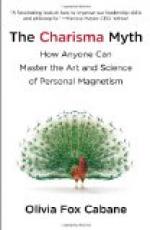In immediate succession to this primitive fact, which is common to the whole animal kingdom, there arose—if we consider the general process without the limitations of circumstances, places, time, and a thousand accidents—two kinds of faculties which were identical in form, although they had different effects, and produced opposite results. For in the case of mythical entification the tendency to impersonation was always increasing and becoming more distinctly zoomorphic and anthropomorphic, and in this form it was crystallized or mummified, while science on the other hand was always enlarging its sphere and dissipating the first mythical form of its conception, until nothing was left but a purely rational idea.
When this evolution takes place in peoples and races which are incapable of improvement, or have a limited capacity for advanced civilization, the faculty of myth remains in the ascendant; and as past and present history shows, mythical stagnation and intellectual barrenness may follow, until intellectual development is arrested and even destroyed. If on the other hand the evolution takes place in peoples and races capable of indefinite civilization, myth gradually disappears and science shines forth victoriously.
Even in historical and civilized races the two cycles go on together, since while robust intellects throw off as they advance the mythical shell in which they were first inclosed, the ignorant masses continue their devotions to fetishes and myths, which they can infuse even into the grandest religious teaching. They perhaps might also perish, crystallized in their miserable superstitions, unless, in virtue of the race to which they belong, the nobler minds were gradually to succeed in illuminating and raising them into a purer atmosphere. In our Aryan race, and in our own country we have all seen the ideas of Christianity transformed into the earlier fetishes and pagan myths; the saints are merely substituted for the gods and demi-gods, for the deities of groves, of the sea and of war, as they are found in ancient mythology. The legends of the saints and of Christ himself are grafted on similar legends of the ancient religions of Greece and Rome, and Paradise has assumed the appearance and form of Olympus. The paintings still extant in the catacombs of Rome, which mark the transformation of the old into the new religion, speak plainly enough by their symbols and figures.
Myth is logically identical with the scientific process in its intrinsic character; starting from a vague subjectivity which gradually assumes a human shape, the first intellectual vitality is lost, unless it is revived by a higher impulse. Science, on the other hand, which begins in myth, gradually divests this subjectivity of its anthropomorphic character, until pure reason is attained, and with this the power of indefinite progress.
The theory which has hitherto been generally accepted by mythologists, even by those who profess Comte’s great principle of historical evolution, is that man began with special fetishes, that these were combined in comprehensive types to form polytheistic hierarchies, and hence he rose by an analogous process to a more or less vague conception of monotheism.




